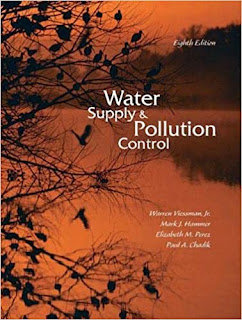Water Supply and Pollution Control 8th Edition
About the Author
For upper-division undergraduate or beginning graduate courses in civil and environmental engineering.
The Eighth Edition of text has been revised and modernized to meet the needs of today's environmental engineering students who will be engaged in the design and management of water and wastewater systems. It emphasizes the application of the scientific method to problems associated with the development, movement, and treatment of water and wastewater. Recognizing that all waters are potential sources of supply, the authors present treatment processes in the context of what they can do, rather than dividing them along clean water or waste water lines. An abundance of examples and homework problems amplify the concepts presented.
Book details

Comments
Post a Comment